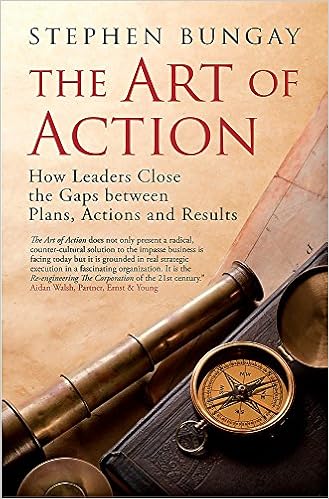
This book is remarkable. The author's breath of reading and research is amazing. Almost every important author or management book of the 20th century is referenced here - in refreshing and often critical candor. From fads like 'Blue Ocean Strategy' to serious works like 'Balance Scorecard' The Art of Action looks at a wide range of material and distills down what works for actually accomplishing something.
However what made this book so significant is the practical advice and implementable ideas. This isn't another ivory tower theory from on high book, but a practical solution that every manager or leader can get results from.
That said it isn't a handbook. More 'how to' should have been included. Illustrations are small. Footnotes are numerous (and without chapter heads). There are no summaries, no easy to read or follow instructions. They exist but thy are not as useful as the author intended. You have to do the work of reading, digesting the material, and thinking through a practical application for your business.
But oh how worthwhile you'll find that process. Of the dozens of books I read annually The Art of Action is one I'll keep at hand, re-read, and use.
Like in war when a business strategy encounters the real world 3 gaps appear (gaps in terms of expected results and reality: outcomes, actions, plans). They are:
1. The knowledge gap - the difference between what we would like to know and what we actually know.
2. The Alignment Gap - the difference between what we want people to do and what they actually do.
3. The Effects Gap - the difference between what we expect our actions to achieve and what they actually achieve.
The Art of Action is about filling those gaps. Stephen Bungay uses the lessons of war and military theorists to figure out how to really create a "learning organization." The mechanical view of workers as learning tasks and slavishly performing them won't work in dynamic situations like war or competitive business environments. People need to know the goals (intentions) of a business and then have the skill sets to proactively and creatively find their own solutions to accomplish them. We provide the strategy, again goals and intentions along with tactical resources but the people think and act independently to accomplish the goals. A tall order however The Art of Action explains how.
Simply a great book that will save you tons of time from reading the hundreds of books this author has read and gleaned the gold from.
"We have a strategy, we have long-term objectives, we all have budgets...meanwhile our people are asking, 'so, what is it exactly that you're asking me to do?'"
"Generating activity is not a problem; in fact it is easy. The fact that it is easy makes the real problem harder to solve. The problem is getting the right things done - the things that matter, the things that will have an impact, the things a company is trying to achieve to ensure success. A high volume of activity often disguises a lack effective action."
No comments:
Post a Comment